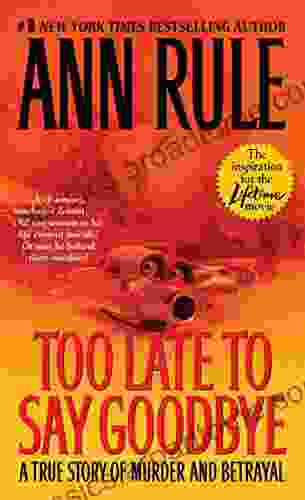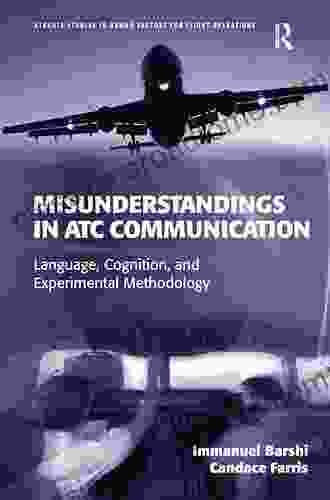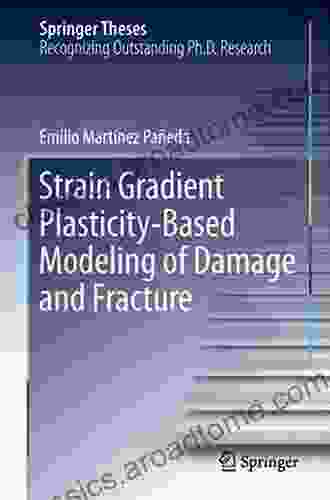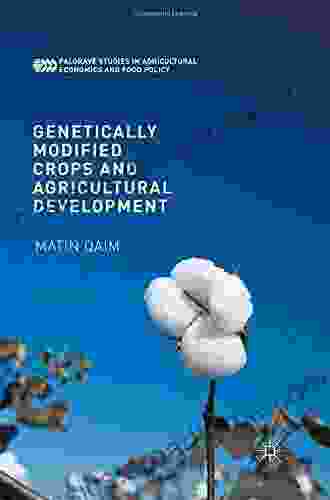Strain Gradient Plasticity Based Modeling Of Damage And Fracture Springer Theses

Damage and fracture are two of the most important failure mechanisms in engineering materials. They can lead to catastrophic failures, resulting in loss of life and property. Therefore, it is essential to have a good understanding of damage and fracture phenomena in Free Download to design safe and reliable structures.
Traditional continuum damage mechanics (CDM) models have been widely used to predict damage and fracture in engineering materials. However, these models often fail to capture the complex microstructural mechanisms that govern damage and fracture at the material level. This is because CDM models are based on the assumption that the material is homogeneous and isotropic, which is not always the case in real materials.
4.4 out of 5
| Language | : | English |
| File size | : | 9850 KB |
| Text-to-Speech | : | Enabled |
| Screen Reader | : | Supported |
| Enhanced typesetting | : | Enabled |
| Print length | : | 176 pages |
Strain gradient plasticity (SGP) is a relatively new constitutive theory that can account for the microstructural effects on damage and fracture. SGP models are based on the assumption that the material is heterogeneous and anisotropic, and that the mechanical behavior of the material is influenced by the strain gradients.
This book presents a comprehensive theoretical and computational treatment of damage and fracture phenomena in ductile materials based on SGP. The book begins with a review of the basic concepts of SGP. The following chapters then develop SGP-based models for damage initiation, damage evolution, and fracture. The book also includes a number of applications of the SGP-based models to engineering problems, including ductile fracture, fatigue crack growth, and stress corrosion cracking.
Strain Gradient Plasticity
SGP is a constitutive theory that extends classical plasticity theory by including the effects of strain gradients. The basic assumption of SGP is that the material is heterogeneous and anisotropic, and that the mechanical behavior of the material is influenced by the strain gradients.
The SGP constitutive equations are derived from a variational principle. The variational principle is based on the assumption that the material is in a state of minimum potential energy. The potential energy is a function of the strain, the strain gradients, and the internal variables.
The SGP constitutive equations are a set of partial differential equations. These equations can be solved using a variety of numerical methods. The most common numerical method used to solve the SGP constitutive equations is the finite element method.
Damage Initiation
Damage initiation is the process by which damage begins to develop in a material. The damage initiation criterion is a function of the stress, the strain, and the strain gradients.
There are a number of different damage initiation criteria that have been proposed in the literature. The most common damage initiation criterion is the maximum principal stress criterion. This criterion states that damage initiates when the maximum principal stress reaches a critical value.
Other damage initiation criteria include the maximum principal strain criterion, the maximum shear stress criterion, and the maximum strain gradient criterion. The choice of damage initiation criterion depends on the material and the loading conditions.
Damage Evolution
Damage evolution is the process by which damage grows and coalesces in a material. The damage evolution law is a function of the stress, the strain, the strain gradients, and the damage state variable.
There are a number of different damage evolution laws that have been proposed in the literature. The most common damage evolution law is the exponential damage evolution law. This law states that the damage state variable evolves exponentially with the plastic strain.
Other damage evolution laws include the linear damage evolution law, the power law damage evolution law, and the Weibull damage evolution law. The choice of damage evolution law depends on the material and the loading conditions.
Fracture
Fracture is the final stage of the damage process. Fracture occurs when the damage state variable reaches a critical value. The fracture criterion is a function of the stress, the strain, the strain gradients, and the damage state variable.
There are a number of different fracture criteria that have been proposed in the literature. The most common fracture criterion is the maximum principal stress criterion. This criterion states that fracture occurs when the maximum principal stress reaches a critical value.
Other fracture criteria include the maximum principal strain criterion, the maximum shear stress criterion, and the maximum strain gradient criterion. The choice of fracture criterion depends on the material and the loading conditions.
Applications
The SGP-based models for damage and fracture have been applied to a variety of engineering problems, including:
* Ductile fracture * Fatigue crack growth * Stress corrosion cracking * Hydrogen embrittlement * Creep damage
The SGP-based models have been shown to provide accurate predictions of the damage and fracture behavior of ductile materials. The models are also able to capture the effects of microstructural features on damage and fracture.
This book presents a comprehensive theoretical and computational treatment of damage and fracture phenomena in ductile materials based on SGP. The book provides a valuable resource for researchers and engineers in the field of computational mechanics, fracture mechanics, and materials science.
4.4 out of 5
| Language | : | English |
| File size | : | 9850 KB |
| Text-to-Speech | : | Enabled |
| Screen Reader | : | Supported |
| Enhanced typesetting | : | Enabled |
| Print length | : | 176 pages |
Do you want to contribute by writing guest posts on this blog?
Please contact us and send us a resume of previous articles that you have written.
 Book
Book Novel
Novel Page
Page Chapter
Chapter Text
Text Story
Story Genre
Genre Reader
Reader Library
Library Paperback
Paperback E-book
E-book Magazine
Magazine Newspaper
Newspaper Paragraph
Paragraph Sentence
Sentence Bookmark
Bookmark Shelf
Shelf Glossary
Glossary Bibliography
Bibliography Foreword
Foreword Preface
Preface Synopsis
Synopsis Annotation
Annotation Footnote
Footnote Manuscript
Manuscript Scroll
Scroll Codex
Codex Tome
Tome Bestseller
Bestseller Classics
Classics Library card
Library card Narrative
Narrative Biography
Biography Autobiography
Autobiography Memoir
Memoir Reference
Reference Encyclopedia
Encyclopedia Bradley Jersak
Bradley Jersak Anthony Perl
Anthony Perl Gabby Benson
Gabby Benson Angelica Stone
Angelica Stone Ben Newman
Ben Newman Andrea Curtis
Andrea Curtis Ambrosia Hawthorn
Ambrosia Hawthorn Ann Deeley
Ann Deeley Michael Sparrow
Michael Sparrow Andrea Grosso Ciponte
Andrea Grosso Ciponte Ankine Dine Oumar
Ankine Dine Oumar Andy Matzner
Andy Matzner The Neville Collection
The Neville Collection Seth Kaplan
Seth Kaplan Bryan Meadows
Bryan Meadows Andrew M Parsons
Andrew M Parsons Amy Solomon
Amy Solomon Katharine C Giovanni
Katharine C Giovanni Leah Price
Leah Price Jac J W Andrews
Jac J W Andrews
Light bulbAdvertise smarter! Our strategic ad space ensures maximum exposure. Reserve your spot today!
 Eliot FosterFollow ·18.4k
Eliot FosterFollow ·18.4k Evan HayesFollow ·9.5k
Evan HayesFollow ·9.5k Stan WardFollow ·17.1k
Stan WardFollow ·17.1k Owen SimmonsFollow ·6.7k
Owen SimmonsFollow ·6.7k Ernest PowellFollow ·16.4k
Ernest PowellFollow ·16.4k Brian BellFollow ·6.1k
Brian BellFollow ·6.1k Gavin MitchellFollow ·8.6k
Gavin MitchellFollow ·8.6k Forrest BlairFollow ·15.7k
Forrest BlairFollow ·15.7k

 Braden Ward
Braden WardThe True Story of Murder and Betrayal
In a small town where...

 W. Somerset Maugham
W. Somerset MaughamUnraveling the Complexities of Human Language: A...
Language is a fundamental aspect of human...

 Ibrahim Blair
Ibrahim BlairTrue Crime Tales That Will Keep You on the Edge of Your...
Prepare to be...

 Rick Nelson
Rick NelsonPatterns In Rhyme: A Journey of Discovery with Patrick...
Welcome to the...

 Edgar Hayes
Edgar HayesWithout Pity: Unmasking the Evil Within
In the realm of true...

 Cooper Bell
Cooper BellFannie Lou Hamer's Indelible Legacy: Unraveling the...
The Black Freedom Movement, a pivotal...
4.4 out of 5
| Language | : | English |
| File size | : | 9850 KB |
| Text-to-Speech | : | Enabled |
| Screen Reader | : | Supported |
| Enhanced typesetting | : | Enabled |
| Print length | : | 176 pages |












